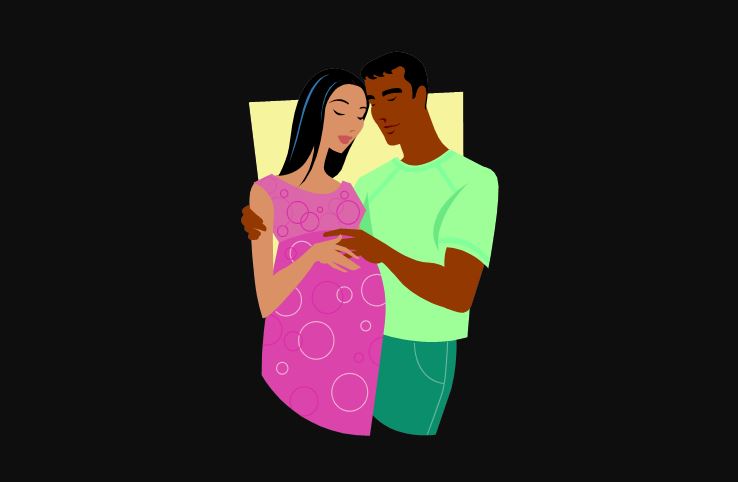
As we celebrate the achievements of women globally this International Women’s Day on March 8, we should also reflect on those women who continue to die every year in the US due to complications during childbirth. A total of 658 women in the United States died while pregnant or within 42 days following delivery, according to the US Centers for Disease Control and Prevention (CDC) National Vital Statistics report released in 2018. That is, about 17.4 maternal deaths per 100,000 live births. In 2016, The Yale School of Public Health found that the maternal death rate for white women in Georgia was more than twice that for white women nationally while the maternal death rate for black women in Georgia was twice that for white women in Georgia.
Preeti, an Atlanta resident, shares the story of complications during her pregnancy. “When I became pregnant at 35, I knew I was a high-risk patient due to chronic high blood pressure and made sure to choose the one perinatologist (an obstetrician with special training in high-risk pregnancy care) covered under my insurance,” she says. “I made sure to consult my general practitioner and switch over to blood pressure medication considered safe for pregnancy before I even started trying to get pregnant.”
Preeti says that she only saw her perinatologist about three times during the course of her pregnancy. Her care was mostly handled by other doctors, physicians’ assistants and registered nurses. Preeti developed gestational diabetes as well as elevated thyroid levels during her pregnancy. “I feel that there was no coordination by my healthcare team to see how I was doing or how it was affecting the baby,” she says.
Preeti developed preeclampsia and had to undergo an emergency -section a month before her due date. Her son, who was only a little over four pounds, was immediately placed in the neonatal intensive care unit (NICU). “My blood pressure did not stabilize for two days after surgery and I was feeling the frustration from the hospital that they could not transfer me to the regular ward, which added to my stress,” she says.
Preeti and her baby are both fine now, but the outcome could have been much worse. “Even though I am an immigrant woman, I am privileged and have a good education, health insurance and a supportive husband. I had parental support throughout my journey. If this can happen to me, it can happen to anybody and can have especially dire consequences for women who are not as privileged as I am,” she says.

We spoke to Dr. Sharmila Makhija, Professor and Chairwoman, Department of Ob/Gyn and Women’s Health, Albert Einstein College of Medicine/Montefiore Health System, to understand the causes behind the high maternal mortality rates in the US and what women can do to reduce their risk. Dr. Makhija is the Board Member of Every Mother Counts, a nonprofit organization, started by Christy Turlington Burns, dedicated to making pregnancy and childbirth safe for everyone around the world.
What is maternal mortality?
The World Health Organization (WHO) defines maternal death as the death of a woman while pregnant or within 42 days of termination of pregnancy from any cause related to or aggravated by the pregnancy or its management. We started to see maternal deaths in the US rise around 1990 and the number doubled in early 2000. The CDC now estimates that 1000 new and expectant mothers will die every year in the United States and an additional 500,000 women will experience life-threatening postpartum complications, called severe maternal morbidity or near misses. This is distressing in a high-resource country, especially when we know that half of the deaths and near-misses are preventable.
What is the reason for the high rate of maternal mortality in the US?
We can broadly break down the reasons into three categories:
Increase in chronic diseases: Studies show that an increasing number of pregnant women in the country have chronic health conditions such as chronic heart disease, hypertension, obesity and diabetes which put them at higher risk of pregnancy complications.
Social Aspects: Social aspects such as having a black race, low literacy rates, living below poverty level and obesity all contribute to high risk factors.
Health Systems: Hospitals across the US have a variable approach to managing obstetric emergencies and the complications of pregnancy and childbirth. Nationally endorsed plans to manage obstetric emergencies and updated training and guidance on implementing these plans is a serious and ongoing need.
What can women do to reduce their risk of a pregnancy-related death?
A healthy pregnancy begins before conception and continues with prenatal care.
Good preconception health is important for every woman. It means taking control and choosing healthy habits.
Pregnant women need to be an advocate and partner in their own healthcare. They should make sure to access prenatal care at an early stage. If they have a chronic health condition, they should proactively talk to their Ob/Gyn to plan an appropriate course of care as they may need more frequent visits to the doctor.
A woman should always feel respected in the delivery of her healthcare.
Sources:
https://www.cdc.gov/nchs/data/nvsr/nvsr69/nvsr69_02-508.pdf
https://www.who.int/healthinfo/statistics/indmaternalmortality/en/
https://www.cdc.gov/reproductivehealth/maternal-mortality
https://www.acluga.org/en/problem-georgia-has-maternal-mortality-crisis
www.everymothercounts.org
——————————
*Navami Naik is an Atlanta-based public health and communications professional.





